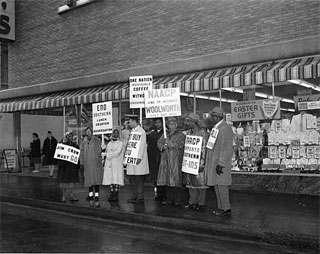The post-war years brought the fight for civil rights into the public consciousness. The NAACP (National Association for the Advancement of Colored People), formed in 1909 as the National Negro Committee, provided a powerful and persuasive forum for progress.
In spite of segregation in the military during World War II, the NAACP fought successfully in 1941 for a Presidential order against discrimination in federal and defense employment. In 1946 the association won the Morgan vs. Virginia case in the Supreme Court, banning state laws that supported segregation in public transportation.
In the 1950s, several landmark decisions would spark controversy and shake up the country's social awareness. The Brown vs. the Board of Education case helped to pave the way for desegregation of schools in 1954, and the following year Rosa Parks made history when she arrested for refusing to give up her seat on a segregated bus in Alabama. These and other episodes sparked the rallies and protests of the 1960s that led to the passage of the Civil Rights Act by Congress in 1964.
The civil rights movement in post-war Minnesota was championed by politician Hubert H. Humphrey and others, who fought tirelessly in the effort to secure and protect the rights of people of color.
Creator: St. Paul Dispatch & Pioneer Press
Publisher: Minnesota Historical Society
Date: 1950
Identifer: location J7.5 p5



